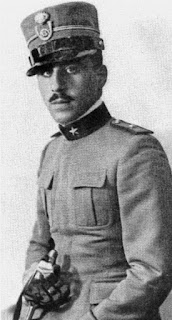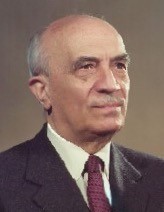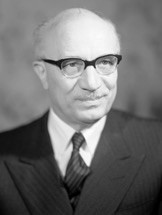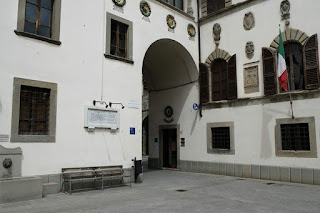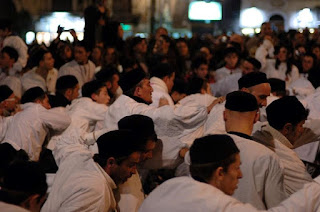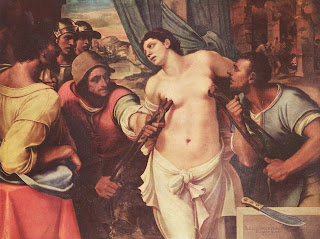Creator of Rome’s iconic Trevi Fountain
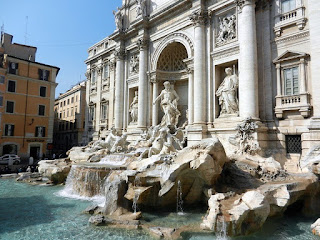 |
| The Trevi Fountain was Nicola Salvi's masterpiece |
The architect Nicola Salvi, famous as the designer of the
Fontana di Trevi – known in English as the Trevi Fountain and one of the most
famous and most visited monuments in Rome – died on this day in 1751.
He was working on the Trevi when he passed away, having been
engaged on the project since 1732. It had to be finished by Giuseppe Pannini
and the giant statue of Oceanus – the Titan God of the Sea in Greek mythology –
set in the central niche, was completed by Pietro Bracci, yet Salvi takes credit
as the lead architect.
Salvi ran a workshop in Rome that he had taken over when his
master, Antonio Canevari, left the city in 1727 to take up a position working
as architectural consultant to the king of Portugal in Lisbon.
He completed a number of commissions on behalf of Canevari
but spent a good deal of his time tutoring others and might have made very
little impression on architectural history had he not submitted entries for two
design competitions run by Pope Clement XII in 1732.
One was for a new façade for the church of San Giovanni in
Laterano, for which his design was commended and in which he did have some
input along with Alessandro Galilei – the winner – and Luigi Vanvitelli.
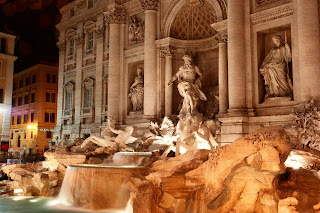 |
| Floodlights illuminate the fountain at night |
The other was to revive a project started and then abandoned
by Gian Lorenzo Bernini one hundred years earlier to design a new fountain at
the end of the former Aqua Virgo Roman aqueduct, in front of the Palazzo Poli.
Accounts of the outcome vary, but there is agreement that
Salvi’s design did not win, with plans submitted by either Galilei or
Ferdinando Fuga preferred. However, both of those architects were from Florence
and there was a public view that the job should go to a Roman and, after
considering this, the pope decided to give it to Salvi.
Salvi imagined a fountain composed of a large central basin,
surrounded by a rough-hewn cliff from which the Palazzo Poli appears almost to
have been carved, the whole composition dominated by the statue of Oceanus, set
into the central arched niche of the palace, standing directly above the point
at which the water emerges.
The monumental façade of the Palazzo Poli was designed by
Vanvitelli to provide the fountain with a suitably dramatic backdrop.
The end product, which takes its names from its location at
the convergence of tre vie – three roads, represented a classic of Roman
Baroque, the largest Baroque fountain in the city and the most significant
building built in Rome in the 18th century.
 |
| The Via Nicola Salvi in Rome skirts the Colosseum |
It defined the career of Salvi, who had been born in Rome in
1697 to a wealthy family thought to have been from Abruzzo originally.
Precociously intelligent, he studied mathematics and philosophy before turning
to architecture.
Until the Trevi, after a decline in the number of major
structures commissioned across the city compared with the previous century,
Salvi’s work had been relatively inconsequential, consisting for the most part
of small, decorative projects.
He did build a baptistery at the Basilica of St Paul Outside
the Walls but that was destroyed in a fire of 1823, while his reconstructed
Chiesa di Santa Maria a Gradi in Viterbo was flattened by bombing during the
Second World War.
Salvi died at his home in Via della Colonna in Rome at the
age of 53, having developed bronchial problems as a result of many hours spent
working in the damp tunnels of the aqueduct.
 |
| Large crowds flock to the Trevi at all hours of the day |
Travel tip:
The ritual of throwing coins over their shoulders into the Trevi Fountain is followed by thousands of visitors each day. They used to be stolen regularly by gangs of
thieves but a law was introduced making it a crime to fish coins out of the
basin. Nowadays, the coins are collected by teams of municipal workers every
night and given to a charity called Caritas, which converts the money into
shopping vouchers for Romans who have fallen on hard times. The coins collected
add up to around €3,000 each day.
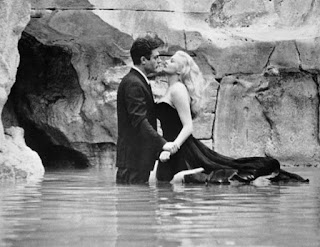 |
| Marcello Mastroianni and Anita Ekberg in La Dolce Vita |
Travel tip:
Part of the Trevi Fountain’s fame around the world is down
to the starring role it has played in a number of movies, most notably Federico
Fellini’s La Dolce Vita, in which Anita Ekberg jumped into the fountain fully
clothed, to be followed by Marcello Mastroianni. The monument also featured in
Roman Holiday, Three Coins in the Fountain and Disney comedy The Lizzie McGuire
Movie. When the revered Mastroianni died in 1996, the fountain was turned off
and draped in black crepe as the city’s tribute.


